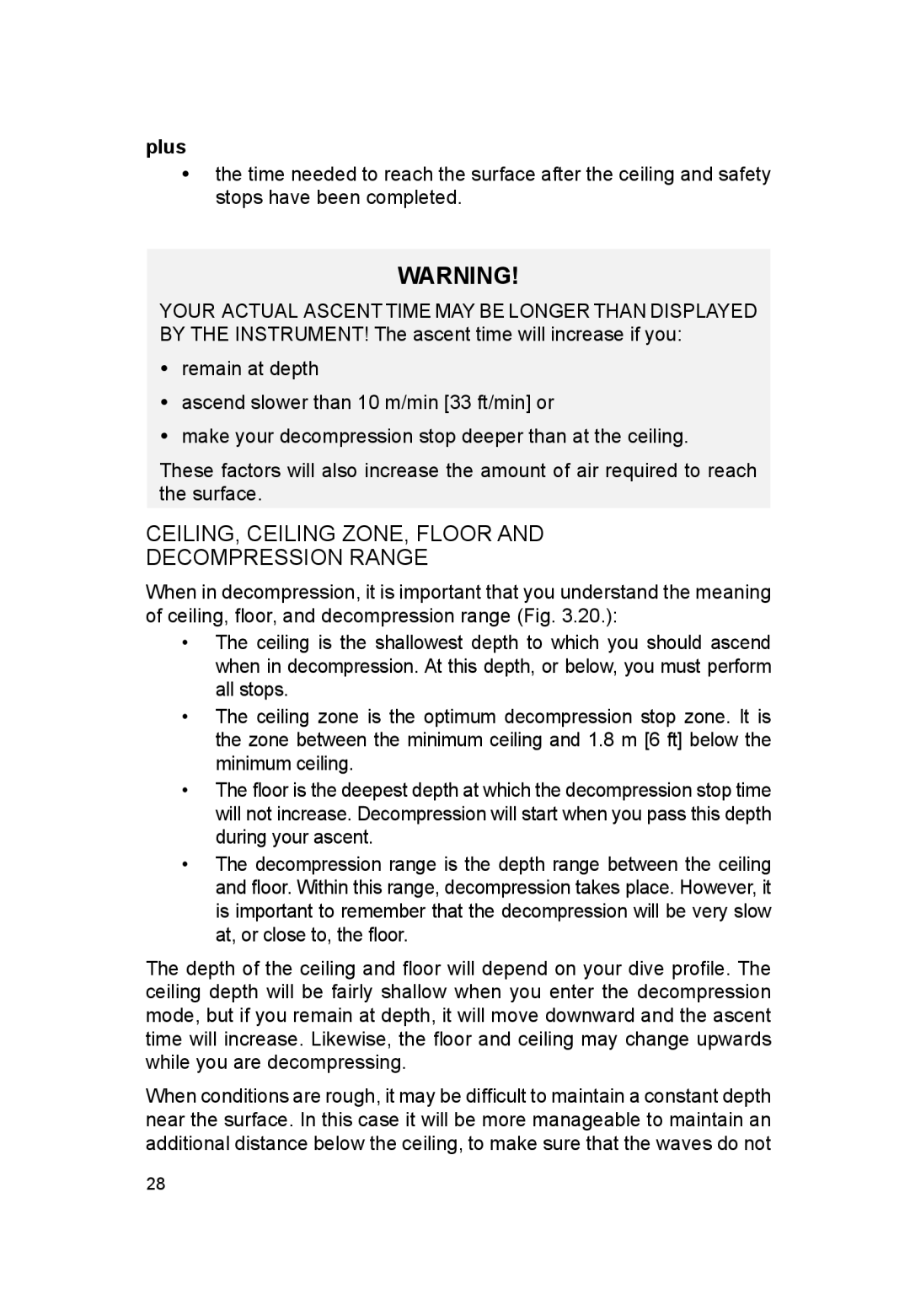
plus
•the time needed to reach the surface after the ceiling and safety stops have been completed.
WARNING!
YOUR ACTUAL ASCENT TIME MAY BE LONGER THAN DISPLAYED BY THE INSTRUMENT! The ascent time will increase if you:
•remain at depth
•ascend slower than 10 m/min [33 ft/min] or
•make your decompression stop deeper than at the ceiling.
These factors will also increase the amount of air required to reach the surface.
CEILING, CEILING ZONE, FLOOR AND
DECOMPRESSION RANGE
When in decompression, it is important that you understand the meaning of ceiling, floor, and decompression range (Fig. 3.20.):
•The ceiling is the shallowest depth to which you should ascend when in decompression. At this depth, or below, you must perform all stops.
•The ceiling zone is the optimum decompression stop zone. It is the zone between the minimum ceiling and 1.8 m [6 ft] below the minimum ceiling.
•The floor is the deepest depth at which the decompression stop time will not increase. Decompression will start when you pass this depth during your ascent.
•The decompression range is the depth range between the ceiling and floor. Within this range, decompression takes place. However, it is important to remember that the decompression will be very slow at, or close to, the floor.
The depth of the ceiling and floor will depend on your dive profile. The ceiling depth will be fairly shallow when you enter the decompression mode, but if you remain at depth, it will move downward and the ascent time will increase. Likewise, the floor and ceiling may change upwards while you are decompressing.
When conditions are rough, it may be difficult to maintain a constant depth near the surface. In this case it will be more manageable to maintain an additional distance below the ceiling, to make sure that the waves do not
28
